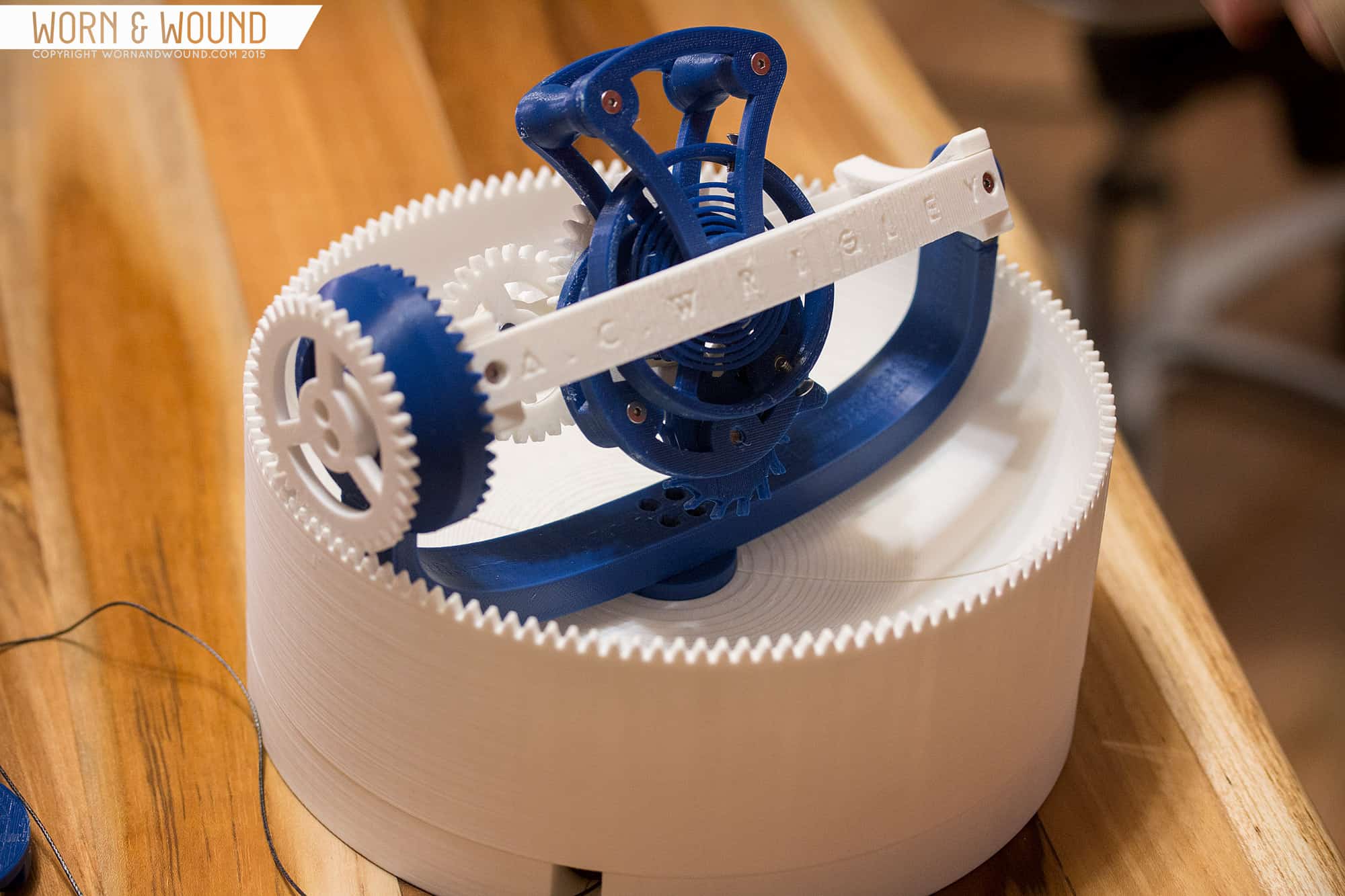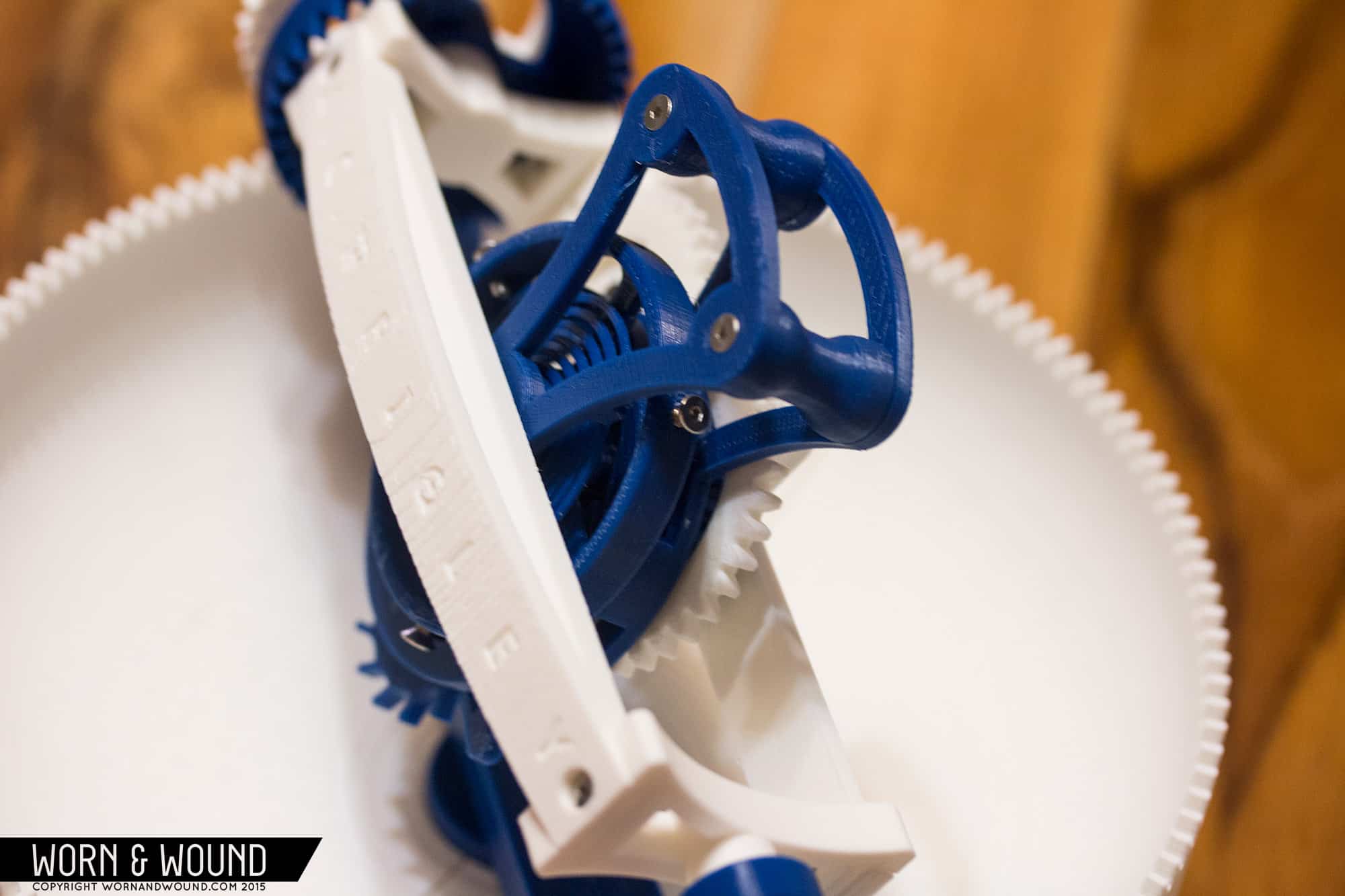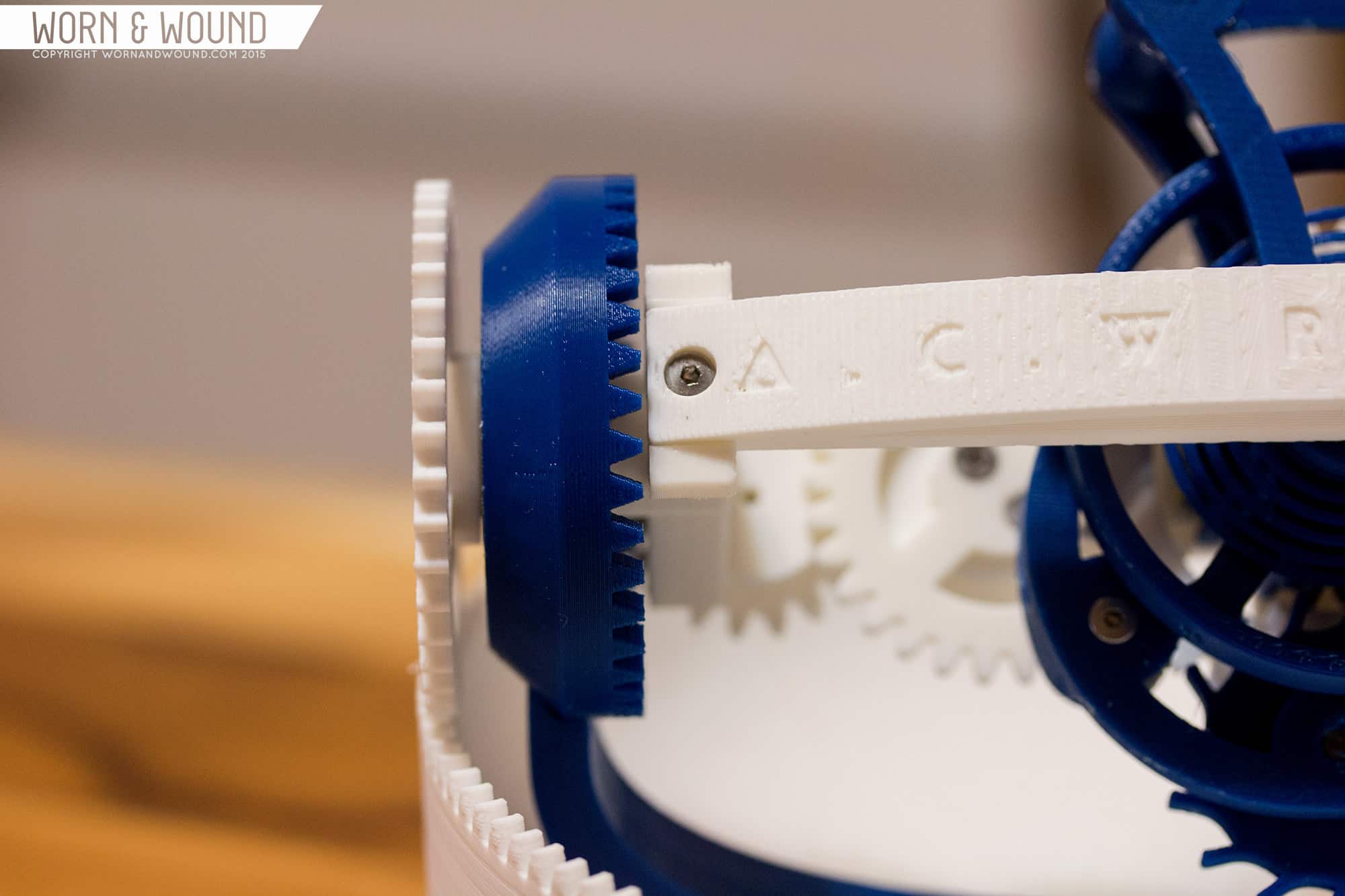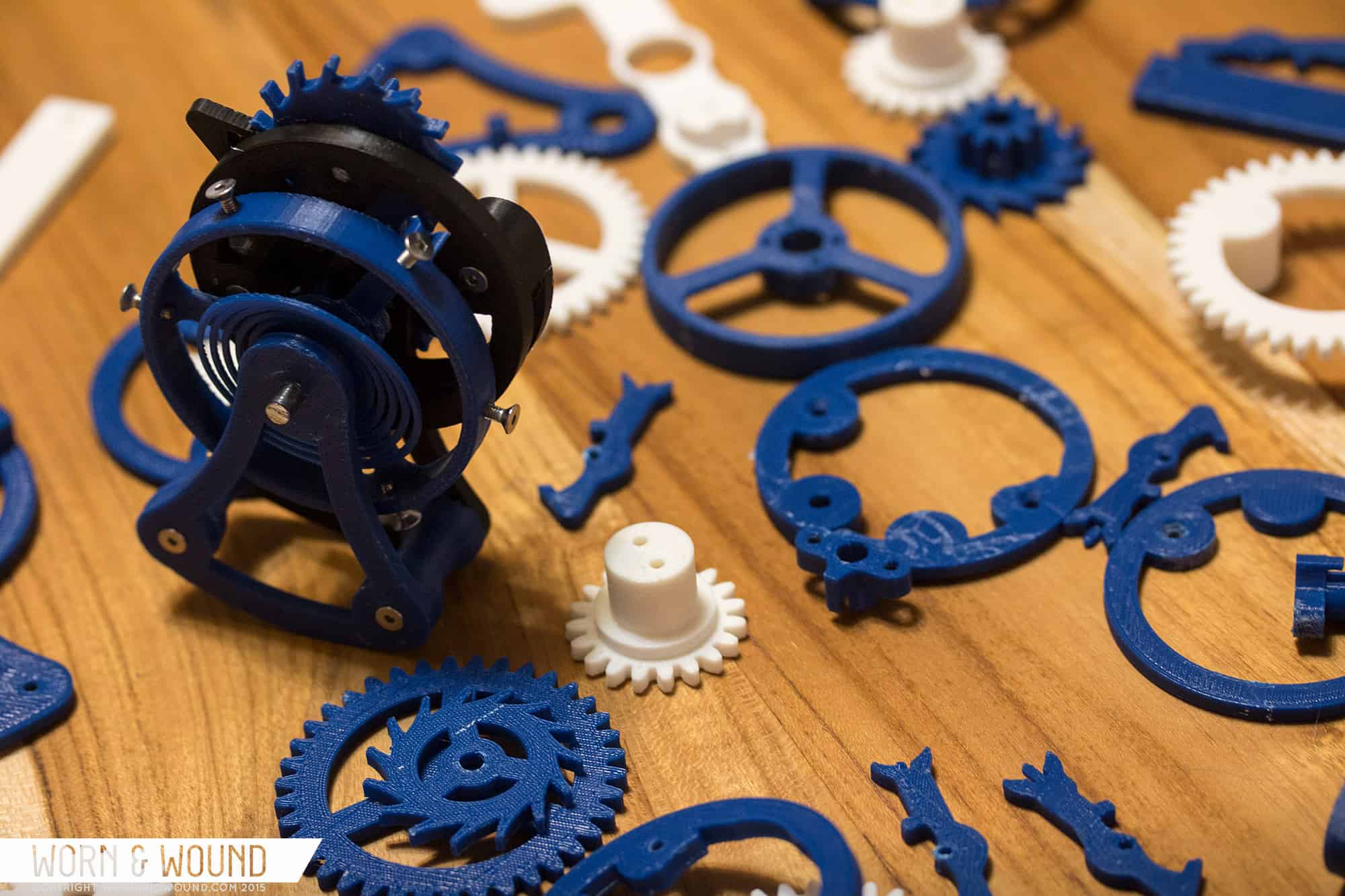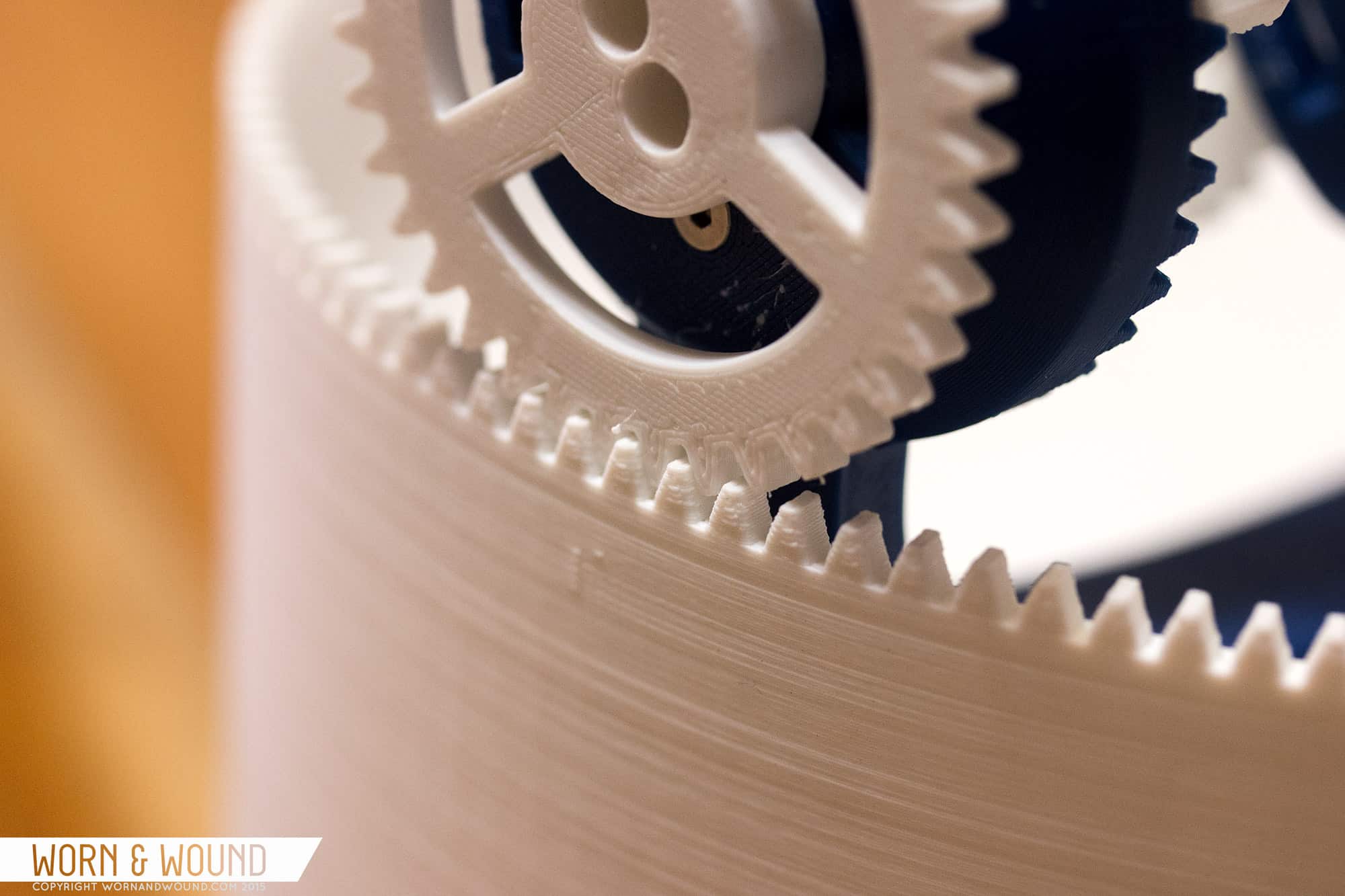Triple-axis tourbillon. These are not words we have had much chance to use on worn&wound. Relegated to the highest of the haute, triple-axis tourbillons are as rare as they are difficult to produce, leaving only a small amount of some of the most revered brands capable of making them. An act which requires a perfect storm of engineering, machining and patience with each finished unit representing hundreds if not thousands of man hours to complete. Those that are out there are exalted by many and owned by few, with price tags easily into the six-figure range. Well, today we get to break that trend with a project that is as fun to behold as it is interesting to hear about: the Clockwerk by Adam Wrigley.
 A mechanical engineer at Frog Design, Adam Wrigley has long been fascinated by mechanical watches. In the last couple of years, one watch in particular caught his attention–the Vianney Halter Deep Space Tourbillon. Inspired by Star Trek, the watch is a futuristic display case for a massive triple-axis tourbillon that sits dead center, spinning around in a spectacular fashion. Hand-made by master watchmakers to order, there are but a handful in existence, each with a price tag nearing $200,000.
A mechanical engineer at Frog Design, Adam Wrigley has long been fascinated by mechanical watches. In the last couple of years, one watch in particular caught his attention–the Vianney Halter Deep Space Tourbillon. Inspired by Star Trek, the watch is a futuristic display case for a massive triple-axis tourbillon that sits dead center, spinning around in a spectacular fashion. Hand-made by master watchmakers to order, there are but a handful in existence, each with a price tag nearing $200,000.









 Featured Videos
Featured Videos




